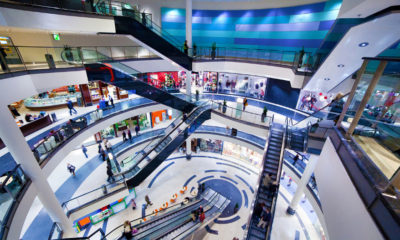Ok, so, the snow and the cold weather have been getting to me. And yes, maybe I’ve been spending a little too much of what little spare time I have doing online shopping. But I must share a recent milestone that definitely gave me pause. I received an email from eBay last week wishing me a “Happy eBay Anniversary”, reminding that I had made my very first eBay purchase 17 years ago on Nov. 16, 2001. Yes, they said 17 years. (They must have a different kind of math over at eBay, because that adds up to a 15-year anniversary to me.) And they were three months late. But hey, it’s the thought that counts.
Anyway, it was a little unnerving and a little “big brother”-like to read the contents of this email. They recapped for me that I’ve made 3 purchases on eBay in the last 12 months and shared that they’ve “noticed a trend” that these purchases are most often related to its Home and Garden category. It then went on to give me my feedback score (a dismal 34) and encouraged me to become a seller on eBay.
(For the record, I have a very nice day job and have no interest in becoming a seller on eBay.)
I guess I have no problem with the retailers I frequent knowing who I am and what my preferences are. However, it would be truly helpful, but possibly very creepy, if they really understood what makes me tick, and therefore, what my preferences really are. If they could do that, it might save some marriages. But I digress.
I have noticed in my recent wanderings through eBay that the assisted shopping triggers have become much more robust. And a little bit pushy, at times. So it occurred to me that I am more inclined to pull for information than having it pushed onto me.
To that end, I recently invested a fair bit of energy into a quest for three specific books. They were each somewhat rare, and some first editions. This was not an “I’ll get them on Amazon” type of quest. This was a hardcore search that involved sites frequented by serious book collectors. In fact, one site was actually two sites, in which there was a U.S. site in addition to a U.K. site that had an entirely different inventory base.
Advertisement
It would have been great, for instance, if there was some overarching search engine, akin to Google, which pulled from a specific list of sites to search for the exact product I sought, based on my specific parameters, and yielded the single positive result at the lowest price. I was unaware of whether one if it exists, and so I spent a considerable amount of time researching multiple sites to ultimately land these three Holy Grails.
This endeavor got me thinking that the future of retail may be more like a category-centric library than a store or a showroom. Rather than having product suggestions pushed to me based on previous searches, purchases or “likes” on sites, I would prefer a clearing house to pull the information to me based on exactly what I’m looking for. I envision a large nave-like space (picture the Reading Room at the Fifth Avenue New York Public Library) with large screens for accessing category information and resource options, with research cubicles off to the sides where one can utilize VR or AR to see and play with product, possibly even side by side. Once the perfect product is found, it can be ordered and purchased on a shopper’s mobile device, then shipped to their home. Hell, it may even get to your house before you do.
I think this could even feed into an on-demand service model, where product isn’t created until purchased. With the mainstream use of 3-D printing, I foresee no reason to wait for production. There could be a separate zone – a “maker” zone – where you can go watch your product being made and take it home on the spot. But I’m getting ahead of myself.
The future of retail, in the age of technology, will be about selling information. Product sales will become merely tangential to the true offering, which is access to the prepackaged information. Think of it this way: The money to be had in the telecommunications industry is not from selling phones, but selling service.
Kathleen Jordan, AIA, CID, LEED AP, is a principal in Gensler’s New York office, and a leader of its retail practice with over 24 years of experience across the United States and internationally. Jordan has led a broad range of retail design projects as both an outside consultant and as an in-house designer. She has led projects from merchandising and design development all the way through construction documentation and administration, and many of her projects have earned national and international design awards. Contact her at kathleen_jordan@gensler.com.
Advertisement


 Headlines1 week ago
Headlines1 week ago
 Photo Gallery20 hours ago
Photo Gallery20 hours ago
 Headlines2 weeks ago
Headlines2 weeks ago
 Headlines2 weeks ago
Headlines2 weeks ago
 Sector Spotlight1 week ago
Sector Spotlight1 week ago
 Headlines1 week ago
Headlines1 week ago
 Headlines2 weeks ago
Headlines2 weeks ago
 Headlines1 week ago
Headlines1 week ago















